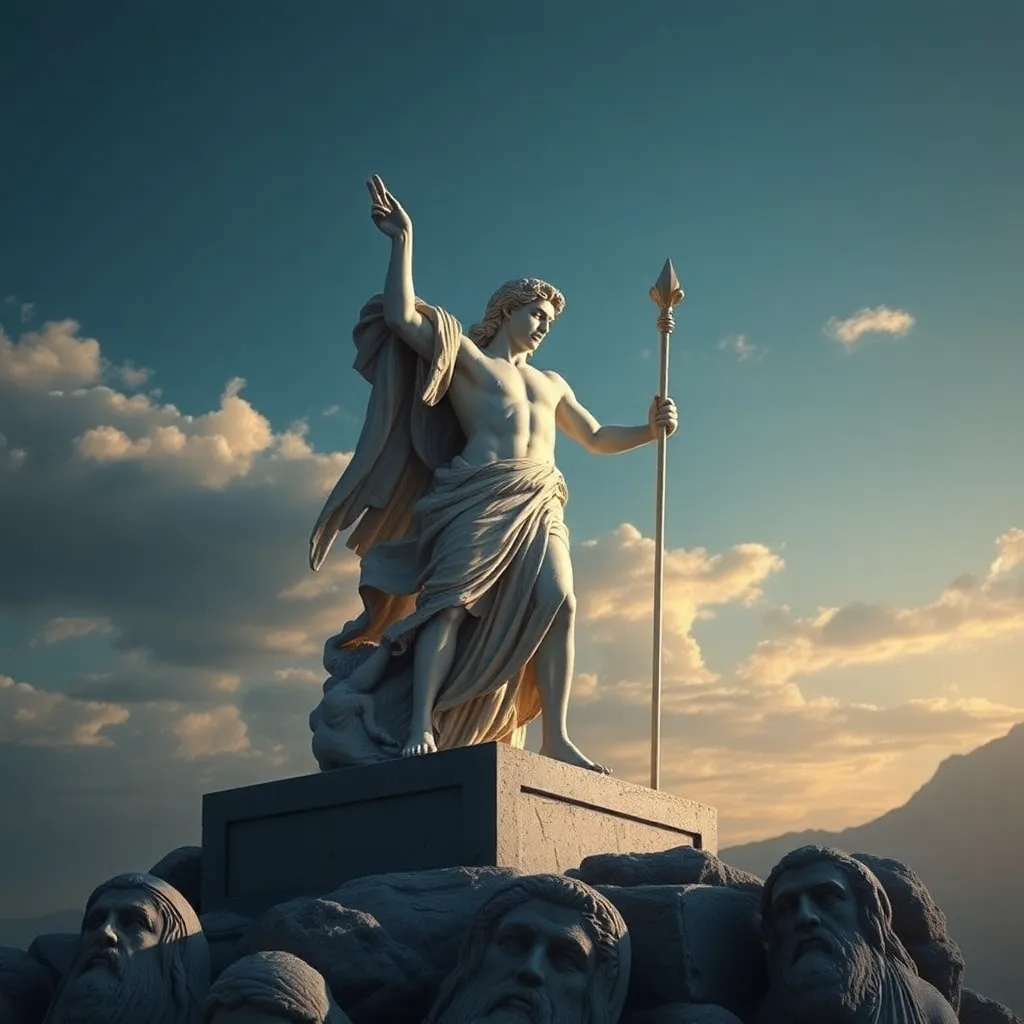Apollo’s Influence on Modern Literature and Art: A Lasting Legacy
I. Introduction
Apollo, the son of Zeus and Leto, is one of the most revered deities in Greek mythology. He is the god of the sun, music, poetry, prophecy, and healing, embodying a harmonious blend of artistic and intellectual pursuits. His multifaceted nature and divine attributes made him a pivotal figure in ancient Greek culture, symbolizing enlightenment, creativity, and truth.
In ancient culture, Apollo was not only worshiped as a god of light and inspiration but also as a protector of the arts and a source of knowledge. His significance extended beyond religious practices; he influenced the very fabric of Greek society, inspiring poets, philosophers, and artists alike. This article aims to explore Apollo’s impact on modern literature and art, highlighting his enduring legacy that continues to resonate in contemporary creative expressions.
II. The Archetype of Apollo in Literature
Apollo serves as a powerful literary archetype, embodying various characteristics that resonate with themes of beauty, intellect, and moral integrity. He is often depicted as a youthful figure, embodying physical perfection and mental acuity, making him a symbol of the ideal artist and scholar.
Examples of Apollo’s influence in classic literature abound. For instance:
- In Homer’s “Iliad,” Apollo is portrayed as a god who intervenes in human affairs, guiding and inspiring characters.
- In the works of Pindar, Apollo is celebrated as the divine patron of poetry and music, reinforcing his role as a muse.
Modern literary works also draw inspiration from Apollo’s archetype. Authors like James Joyce and T.S. Eliot reference Apollo to explore themes of enlightenment and artistic ambition, showcasing how the figure continues to inspire writers today.
III. Apollo as a Symbol of Creativity and Inspiration
Apollo’s role in promoting artistic expression is profound. He is often seen as the source of inspiration for poets, musicians, and artists, epitomizing the creative spirit. His association with the arts is so strong that the term ‘Apollonian’ is frequently used in contemporary literary theory to describe works that embody clarity, harmony, and rationality.
Several authors have invoked Apollo in their narratives, using him as a symbol of creative aspiration. Notable examples include:
- F. Scott Fitzgerald, who references Apollo in “The Great Gatsby” to illustrate themes of idealism and the pursuit of beauty.
- Virginia Woolf, whose works reflect the tension between inspiration and the struggles of the creative process, often paralleling Apollo’s dual nature.
IV. Visual Arts: Apollo’s Enduring Legacy
The historical representation of Apollo in classical art is a testament to his significance in ancient culture. Artists such as Praxiteles and Michelangelo have depicted Apollo in various forms, highlighting his beauty and divine attributes.
As art evolved from classical to modern interpretations, so did the representation of Apollo. Modern artists have reimagined Apollo in ways that reflect contemporary values and aesthetics. For instance:
- Adolphe-William Bouguereau’s “The Birth of Venus” evokes the beauty of the divine through an Apollonian lens.
- Contemporary artists like Kehinde Wiley incorporate Apollo’s imagery into their works, exploring themes of identity and representation.
V. Apollo in Music and Performance
The influence of Apollo extends significantly into the realm of music and performance. Composers throughout history have drawn inspiration from Apollo’s attributes, creating works that celebrate his essence. For example:
- Richard Strauss’s “Die Frau ohne Schatten” features characters that embody the Apollonian ideals of truth and beauty.
- Benjamin Britten’s “Death in Venice” reflects themes of artistic aspiration and the pursuit of the unattainable, akin to Apollo’s nature.
Additionally, operas, ballets, and modern performances centering around Apollo serve to reinterpret his legacy. The ballet “Apollo” by George Balanchine showcases the god’s influence on artistic creativity through movement and music.
VI. Thematic Exploration: Light, Truth, and Harmony
Apollo is often associated with light, truth, and harmony, concepts that are deeply woven into the fabric of artistic creation. His connection to light symbolizes enlightenment and knowledge, while his embodiment of truth relates to the moral integrity found in art.
These themes manifest in contemporary literature and art through:
- Literary works that explore the nature of truth and the struggle for clarity, echoing Apollo’s role as the god of prophecy.
- Visual art that employs light as a central element, symbolizing inspiration and insight.
The relevance of harmony in modern creative works can also be traced back to Apollo’s influence, as artists strive to create balanced and aesthetically pleasing compositions that resonate with audiences.
VII. Cultural Adaptations and Interpretations
Apollo’s portrayal transcends ancient Greece, finding resonance in various cultures worldwide. Different civilizations have adapted Apollo’s mythos, often intertwining it with their own artistic and literary traditions. For example:
- In Roman culture, Apollo was worshiped as the god of prophecy and healing, with adaptations in literature and art that reflect Roman values.
- In contemporary adaptations, Apollo’s character appears in global literature and art, representing universal themes of creativity and enlightenment.
The resonance of Apollo’s legacy in today’s diverse artistic expressions speaks to the timeless nature of his influence, as artists continue to draw from his archetype to explore complex themes and ideas.
VIII. Conclusion
Apollo’s influence on modern literature and art is profound and enduring. His archetype as a symbol of creativity, truth, and harmony continues to inspire artists and writers across the globe. Reflecting on the importance of mythological figures like Apollo in contemporary creativity reveals how these ancient narratives shape our understanding of artistic expression today.
As we explore the lasting legacy of Apollo, we recognize that his essence is woven into the very fabric of our cultural expressions, reminding us of the power of creativity and the pursuit of truth in our artistic endeavors.




